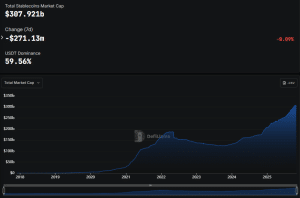AI and Robotics Tokens Dominate Daily Gainers as DePIN Sector Gains Momentum

The cryptocurrency market witnessed a significant increase in AI and decentralized physical infrastructure network (DePIN) tokens on October 29, 2025. Multiple projects made double-digit gains due to the increasing interest in blockchain and physical world applications. RICE AI, Sapien, and PEAQ demonstrated a strong performance as investors shift focus to projects with tangible real-world utility and sustainable revenue models.
RICE AI Fueling a Data Revolution in Robotics
RICE AI has emerged as one of the strongest performers, demonstrating the marketplace’s demand for AI-powered robotics infrastructure. The token is based on a decentralized system to generate robotics data collected, and this will potentially be a source of interest to investors later in the future of AI training datasets.
RICE AI platform allows teleoperators to remotely control robots and retrieve data from robot vision, joint movements, and force measurements. Users can earn rewards in tokens based on the dexterity and performances of their devices. This approach addresses a key issue for developing AI, which is access to high-quality and real-world data training.
Rice Robotics received $7 million in pre-Series A funding from prominent investors such as Alibaba Entrepreneurs Fund, Soul Capital, and Audacy Ventures. The company’s partnerships with major corporations such as Nvidia, Softbank, and 7-Eleven Japan have affirmed its business model and led to investor confidence. RICE AI extended its rally to a 63.4% market cap increase over two weeks.
Sapien Protocol Develops Decentralized AI Infrastructure
The excellent performance of Sapien demonstrates that the market requires the protocols that address the needs of human expertise to the requirements of AI training. Sapien uses blockchain-based incentives via a proof-of-quality model that incorporates staking, peer validation, and slashing mechanisms to verify human knowledge to convert human knowledge into qualified training data for AI systems.
The Sapien Foundation launched its token generation event on August 20, 2025, utilizing a fair launch model with an initial unlock of 25% of the total 1 billion SAPIEN tokens on Coinbase’s Base blockchain. This method of allocating tokens has helped to develop a sustainable ecosystem of contributors, whilst maintaining price stability. The successful completion of the protocol indicates that the Web3 solutions can address the essential issue of AI, which implies quality data inputs to machine learning systems.
PEAQ Network Accelerates Growth of DePIN
PEAQ and other DePIN-related tokens indicate that the industry is maturing between its conception and a real-life application. PEAQ had a 500% increase in transactions in Q-3 2025, from approximately 30,000 in early July to approximately 150,000 by late September and early October.
PEAQ is partnering with the Virtual Assets Regulatory Authority in Dubai to develop the Machine Economy Free zone. This program is intended to establish a legal certainty of projects such as community-owned robo-cafes and decentralized energy grids. This regulatory agreement is a major step forward for the DePIN space, as it creates a framework of institutional legitimacy and legal clarity.
The network has expanded rapidly, with 53 DePINs active by the end of Q-2 2025. These projects provide centralized physical infrastructure, centralized physical AI, machine DeFi, and tokenized machine real-world assets. However, investors should be aware that PEAQ’s price experienced considerable volatility after a major token unlock event on September 12, 2025. During this event, 84.84 million PEAQ tokens were sold to circulation.
Conclusion
The daily gainers list on October 29 revealed maturation of the crypto market, which is beginning to favor utility over speculation. As AI and robotics continue their exponential growth cycle, blockchain protocols connecting the physical and digital worlds will be able to capture a substantial percent of market share. With infrastructure originally developed for DePIN, regulatory developments, and real-world deployments, it appears more likely for this rally to be underpinned with rational bases than speculative based cycles in the past.
You May Also Like

Kalshi debuts ecosystem hub with Solana and Base

Coinbase Says Banks’ Stablecoin Fears ‘Ignore Reality,’ Dismisses Deposit Drain Concerns
